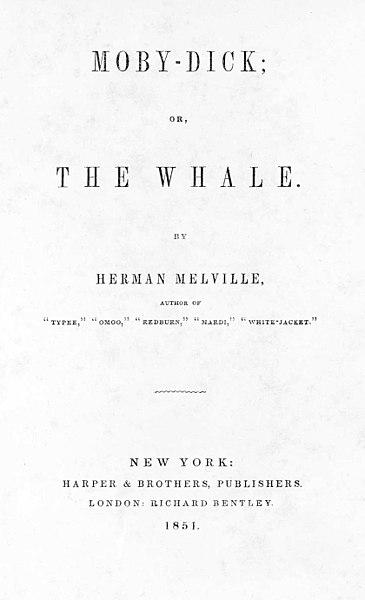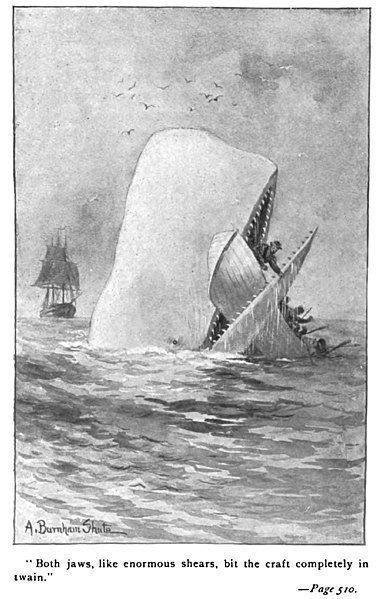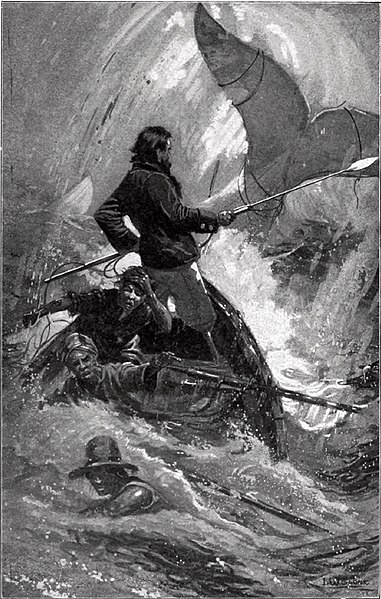Queequeg is a character in the 1851 novel Moby-Dick by American author Herman Melville. The story outlines his royal, Polynesian descent, as well as his desire to "visit Christendom" that led him to leave his homeland. Queequeg is visually distinguished by his striking facial tattoos and tan skin. Ishmael encounters Queequeg in Chapter Four and they become unlikely friends. Once aboard the whaling ship the Pequod, Queequeg becomes the harpooner for the mate Starbuck.
Queequeg
Queequeg (center) and Ishmael approach the Pequod
Austrian actor Friedrich von Ledebur as Queequeg in the 1956 film adaptation
Moby-Dick; or, The Whale is an 1851 novel by American writer Herman Melville. The book is the sailor Ishmael's narrative of the maniacal quest of Ahab, captain of the whaling ship Pequod, for vengeance against Moby Dick, the giant white sperm whale that bit off his leg on the ship's previous voyage. A contribution to the literature of the American Renaissance, Moby-Dick was published to mixed reviews, was a commercial failure, and was out of print at the time of the author's death in 1891. Its reputation as a Great American Novel was established only in the 20th century, after the 1919 centennial of its author's birth. William Faulkner said he wished he had written the book himself, and D. H. Lawrence called it "one of the strangest and most wonderful books in the world" and "the greatest book of the sea ever written". Its opening sentence, "Call me Ishmael", is among world literature's most famous.
The cover of the first American edition of Moby-Dick, published in November 1851
Moby Dick attacking a whaling boat
The illustration of Queequeg in Melville's 1902 edition
Moby Dick in the 1902 edition






